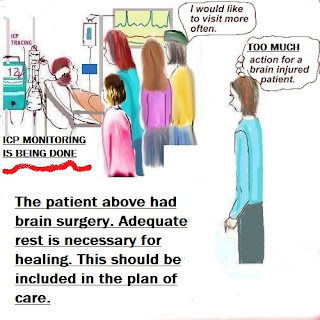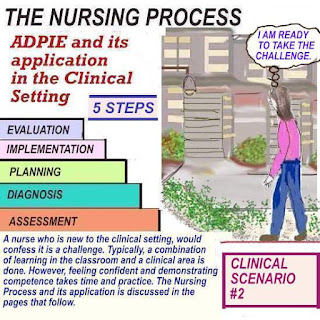BRAIN ASSESSMENT AND MANAGEMENT
Scenario 1: Sam had a stroke involving the
occipital area of the brain. His vision was
affected. He was advised by his doctor to
give up his driving privileges. He refused
and drove into a tree.
Scenario 2: Tina's stroke involved the parietal
lobe. She is having difficulty with distinguishing
right from left and math calculations.
Enjoy the video: The stroke patient
An eye exam may become necessary to check
for visual deficits. Visual acuity testing is done
from about 20 feet away.
occipital area of the brain. His vision was
affected. He was advised by his doctor to
give up his driving privileges. He refused
and drove into a tree.
Scenario 2: Tina's stroke involved the parietal
lobe. She is having difficulty with distinguishing
right from left and math calculations.
Enjoy the video: The stroke patient
An eye exam may become necessary to check
for visual deficits. Visual acuity testing is done
from about 20 feet away.
The brain is protected by the skull. Injury to the brain may result in swelling.
The skull is made of solid bone and the brain has no room to expand when swelling
occurs. ICP Monitoring is done to reduce swelling and monitor brain pressures.
The skull is made of solid bone and the brain has no room to expand when swelling
occurs. ICP Monitoring is done to reduce swelling and monitor brain pressures.
CLINICAL SCENARIO:
The patient in the above scenario had brain surgery.
ICP Monitoring is being done. Family members have
been around the bedside for several hours.
Many nurses will have the opportunity to manage a
brain injured patient. Injury may be caused by bleeding
into the brain, subarachnoid hemorrhage, trauma or
surgical intervention.
Regardless of the cause. it is important for the nurse
to be aware of proper management.
Please watch the video: ICP monitoring
Learn more about the effect of stroke on the
cranial nerves :
cranial nerves :







Comments
Post a Comment